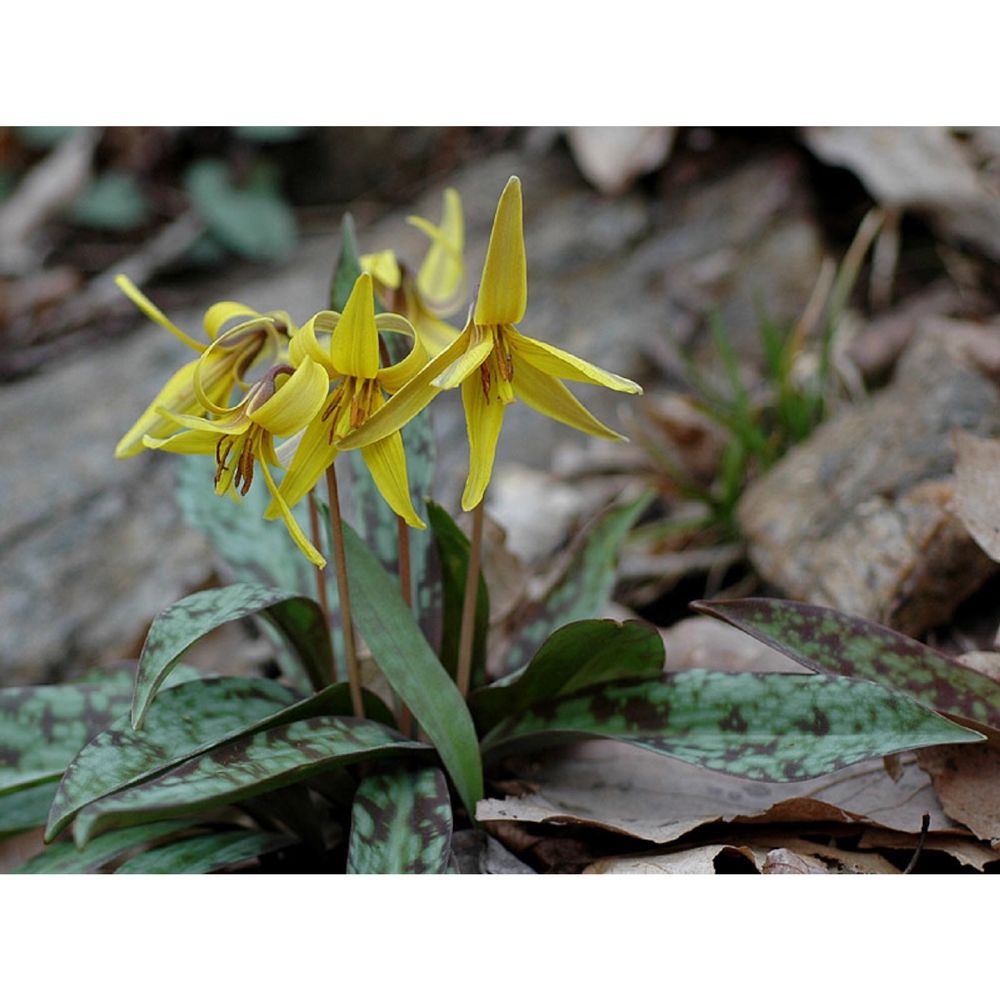Yellow trout lily
(Erythronium americanum)

Description
Erythronium americanum, commonly known as yellow trout lily, is a species of flowering plant in the Liliaceae family. This plant is native to North America and can be found in a variety of habitats, including deciduous forests, floodplains, and wet meadows. In this article, we will explore the physical characteristics, distribution, habitat, cultivation, and uses of Erythronium americanum. Physical Characteristics Erythronium americanum is a perennial herbaceous plant that grows from a bulb. The leaves are basal, which means they grow at the base of the stem. The leaves are lance-shaped and can be up to 20 cm long and 5 cm wide. The leaf color is usually a light green with dark green or brown spots. The flower stem can reach up to 30 cm tall and bears one to three nodding flowers. The flowers have six petals that are bright yellow and pointed. The petals are reflexed, which means they curve backward. The flowers bloom in early spring, usually in April or May, before the leaves have fully developed. Distribution and Habitat Erythronium americanum is native to eastern North America, from Quebec and Ontario in Canada, to Florida and Texas in the United States. It is most commonly found in the eastern part of the United States, from Maine to Georgia. The plant prefers moist, well-drained soils and can be found in a variety of habitats, including deciduous forests, floodplains, and wet meadows. It can also be found growing in shaded areas along streams and on rocky slopes. Cultivation Erythronium americanum can be grown in gardens and is a popular choice for woodland gardens. The plant prefers moist, well-drained soils with a slightly acidic pH. It is important to keep the soil moist, especially during the growing season. The bulbs should be planted in the fall, before the ground freezes, at a depth of 5-7 cm. The bulbs should be spaced about 10-15 cm apart. The plant will self-seed and form clumps over time. Uses Erythronium americanum has several traditional medicinal uses. The Cherokee used the plant to treat wounds, while the Iroquois used it to treat tuberculosis. The plant has also been used as a diuretic and to treat urinary tract infections. The bulbs of the plant are edible and were used by some Native American tribes as a food source. However, caution should be exercised as the bulbs can be toxic if not cooked properly. In addition to its traditional uses, Erythronium americanum is also grown in gardens and is a popular choice for woodland gardens due to its bright yellow flowers and spotted leaves. Conservation Status The conservation status of Erythronium americanum is currently secure, as it is not considered to be globally threatened or endangered. However, the species may be vulnerable to habitat loss and fragmentation, especially in areas where land development and agriculture are causing the destruction of wetland and forest habitats. The loss of habitat can lead to declines in populations and genetic diversity, which can ultimately impact the survival of the species. Therefore, it is important to protect and conserve the habitats where Erythronium americanum occurs to ensure the long-term survival of this plant species. Conclusion In conclusion, Erythronium americanum is a beautiful and useful plant native to North America. Its bright yellow flowers and spotted leaves make it a popular choice for gardens, while its traditional medicinal uses and edible bulbs make it an important plant for Native American communities. With proper cultivation, this plant can provide beauty and utility for years to come.
Taxonomic tree:







